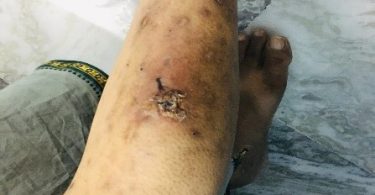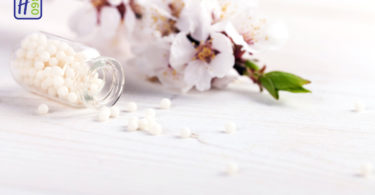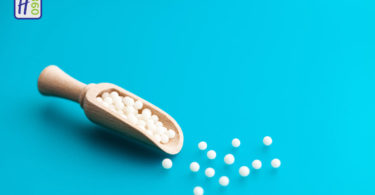Author:
Dr. J. P. DESAI.
M. D. (HOM)
Professor & H.O.D. Dept of Surgery
YHMC&H Narigana, Mangalore
Differential Diagnosis of Red Eye and Homoeopathic
Approach
- Most common ocular complaint
- Common in children and adults
- Initial consultation: GP or optometrist
- Aetiology difficult to determine
- Apprehension
- Careful history is vital
- Thorough clinical examination- including visual acuity by Pen torch, fluorescein, cobalt blue light etc.
- First 24-36 hours, bacterial infection is often practically indistinguishable from other causes of conjunctivitis and also from episcleritis or scleritis
History :-
- Onset
- Location (unilateral /bilateral /sectoral)
- Pain/ discomfort (gritty, FB sensation, itch, deep ache)
- Photosensitivity
- Watering +/or discharge
- Change in vision (blurring, halos etc)
- Exposure to person with red eye
- Trauma
- Travel
- Contact lens wear
- Previous ocular history (eg; hypermetropia)
- URTI
- Autoimmune diseases
Examination of Eye :-
- Inspect whole patient
- Visual acuity of each eye + PH
- Pupil reactions
- Lymphadenopathy- preauricular nodes
- Eyelids
- Conjunctiva (bulbar and palpebral)
- Cornea (clarity, staining with fluorescein, sensation)
- Anterior chamber (depth)
- Pupils shape/ reaction to light / accomodation
- Fundoscopy
- Eye movements
Causes :-
- Lids
- Blepharitis
- Marginal keratitis
- Trichiasis
- Chalazion/ Stye
- Sub-tarsal foreign body
- Canaliculitis
- Dacrocystitis
- Conjunctiva
- Bacterial conjunctivitis
- Gonococcal conjunctivitis
- Chlamydial conjunctivitis
- Viral conjunctivitis
- Allergic conjunctivitis
- Subconjunctival haemorrhage
- Episcleritis vs Scleritis
- Pingueculum
- Pterygium
- Cornea
- Bacterial keratitis
- Herpetic keratitis
- Foreign body
- Anterior chamber
- Anterior uveitis/ iritis vs vitritis
- Acute angle closure
- Herpes Zoster ophthalmicus
- Trauma
- Orbital cellulitis vs pre-septal cellulitis
Homoeopathic Approach as per the Condition: –
Most of the time it is been found that we are not confident while treating acute problems of eye. Eye being a most vital organ of the body every homoeopath is in a dilemma while treating the case related to eye complaints. The concept should be clear in mind that we as a homoeopath can treat many of the conditions related to eye with our remedies, but one should do the diagnosis of the disease properly beforehand and then decide the remedy as per the symptom similarity
Here are some of the remedies and their indications as per the disease condition.
- CALCAREA CARBONICA
• Vision become diminished as if looking trough a mist
• Ulceration and opacities of the cornea
• Scrofulous ophthalmia
• Chronic dilatation of pupils
• Eye is sensitive to light
MODALITIES
Worse: from cold, moist air, light in general
Better: in dry, warm weather.
2. PHOSPHORUS
- In both hyperaemia and inflammation of retina
- The balls sore on motion, with photopsia ( appearance as of sparks or flashes ) or chromatopsia ( colourless object appear tinged with colour )
- Rapidly increasing myopia and fatty degeneration
- Black floating points before the eyes
- A green halo around the candle light in the evening
- Distant objects appear to be covered with a mist
- Eyes very weak and seems large
MODALITIES
Worse: evening until midnight, from cold.
Better: in the dark, during rest and after sleep.
3. NATRUM MURIATICUM
- Burning in the eyes with increased secretion of mucus
- Sensation as if sand where in the eye in the morning
- Pressure in the eye on looking intently at anything
- Pustules and ulcers of the cornea
- Unsteadiness of vision, objects become confused on looking at them.
- Letters run together while reading.
- Small fiery points constantly before the eyes
- Photophobia marked , lids spasmodically closed
- Redness of the white of the eye, with lachrymation
- Excessively sore, red, disgusting eye lids
MODALITIES
Worse: morning, periodically, heat in general, after exertion
Better: in open air, rest.
4. SILICEA
- Vision confused, letters run together on reading
- Angles of eye affected
- Aversion to light, especially daylight it produces dazzling
- Perforating or sloughing ulcers of cornea
- Abscess in cornea after cataract surgery
- Opacity of the cornea, corneal fistula with tearing shooting pains
- Painful as if too dry and full of sand in the morning
- Ciliary neuralgia
MODALITIES
Worse: in morning, at night, and from uncovering
Better: from warmth, in warm air, and middle of the day, wet or humid weather.
5. NAPHTHALENE
- Opacity of the cornea
- It produces retinal detachment, papilla-retinal infiltration, deposits in patches up on retina
- Amblyopia and consecutive amaurosis ( blindness without any apparent lesion )
- Sparkling synchysis ( softening or fluid condition of the vitreous body of eye )
- Exudation in the retina, choroid and ciliary body
6. EUPHRASIA
- Profuse flow of mucous from the sinuses and at night from the eyes
- Sticking the eye lids together
- Burning and swelling of eye lids
- Photophobia
- Pulsating head pains
- Lens appears gray
- Frequent inclination to blink
- Little blisters on cornea
- Sticky mucous on cornea, must wink to remove it
MODALITIES
Worse: evening, indoors, warmth, from light. Better: from coffee, in dark.





